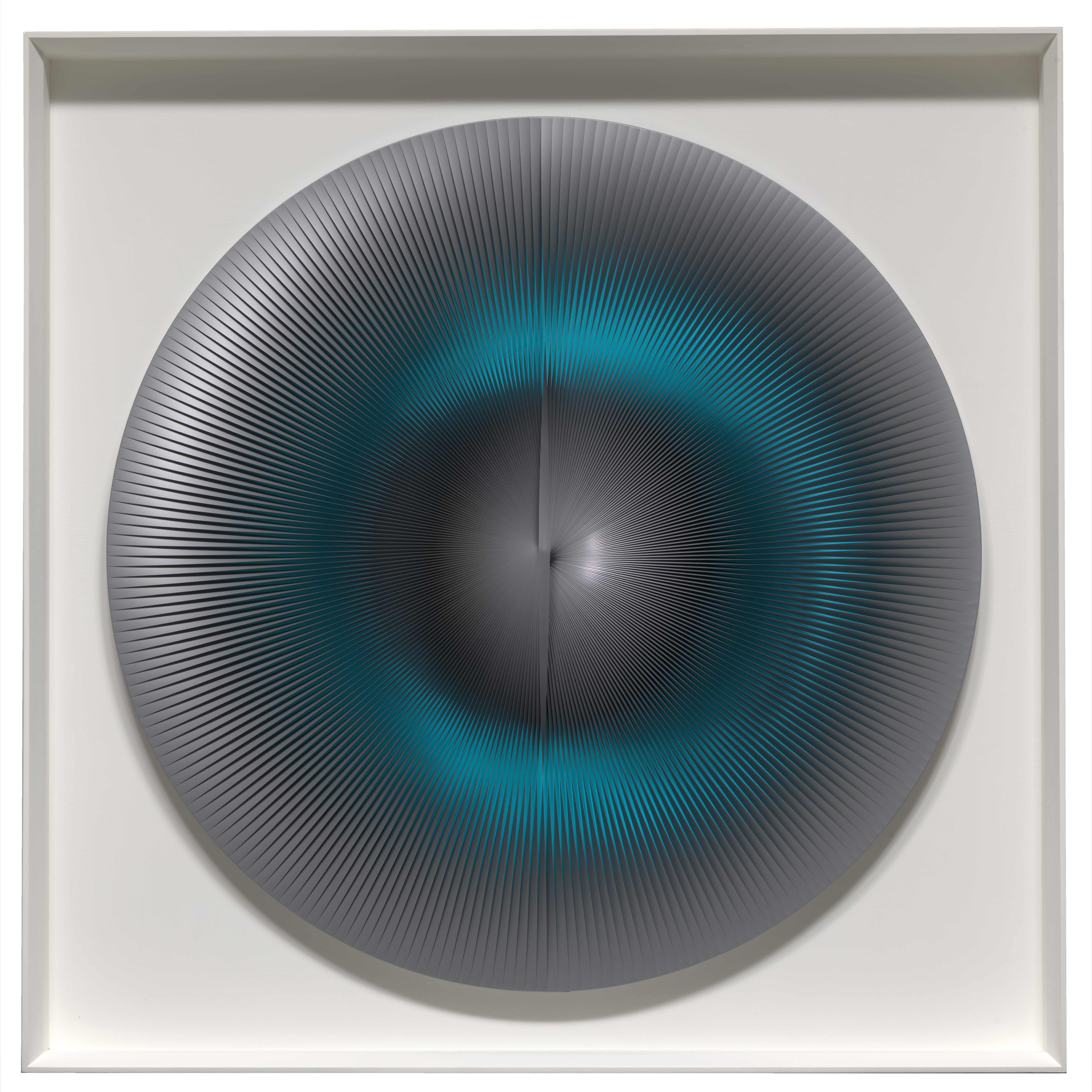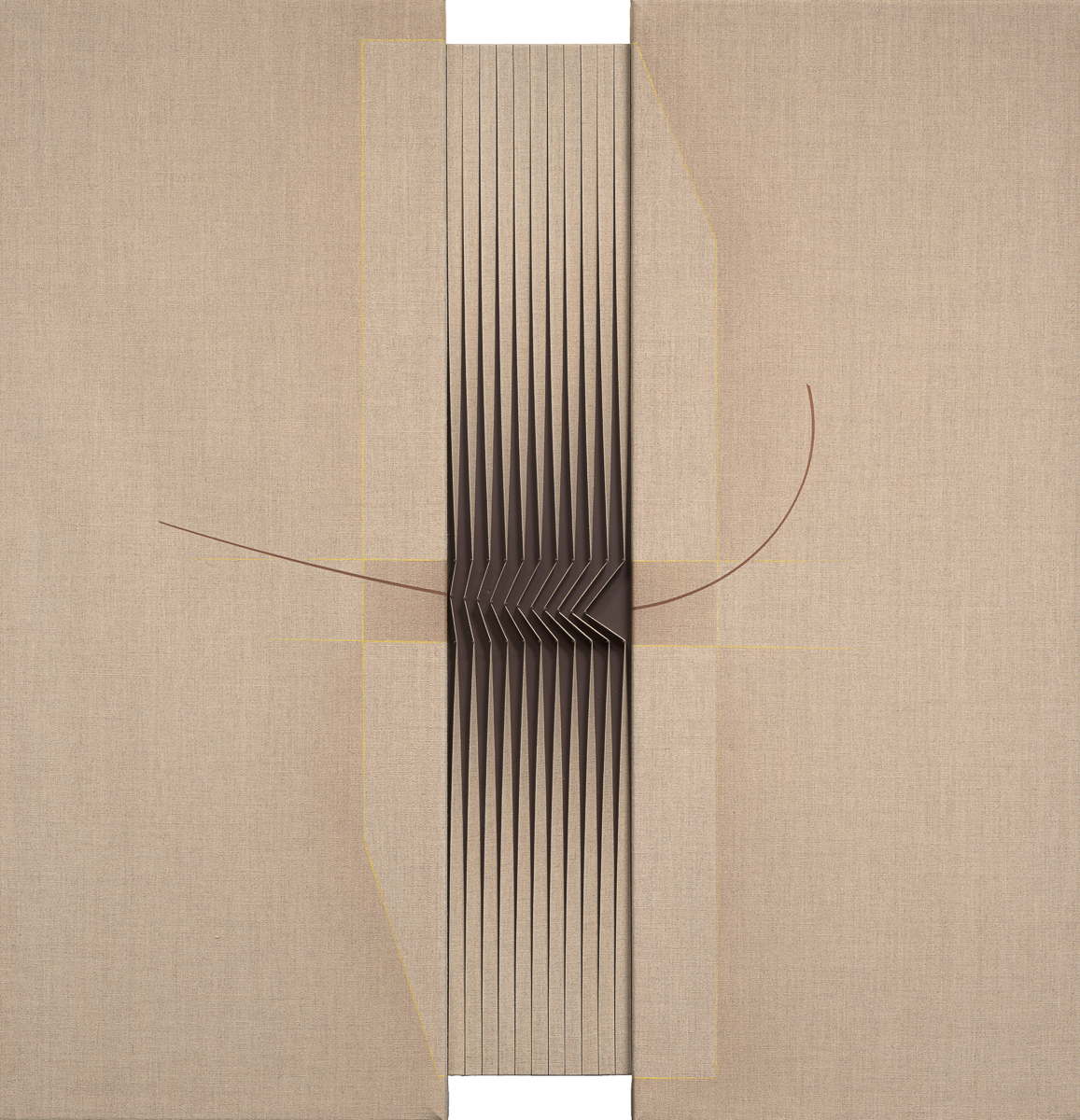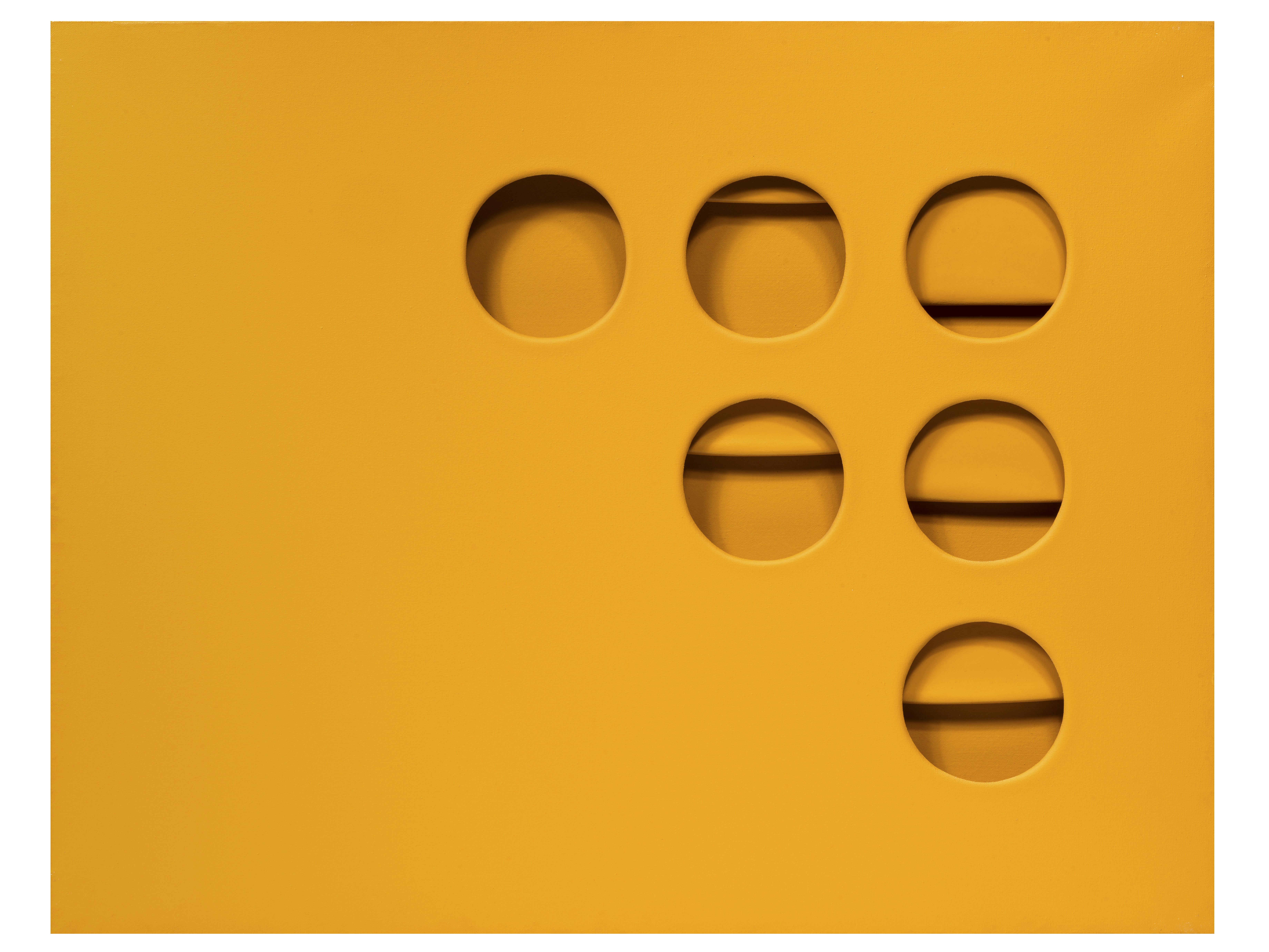The ongoing dialogue between the design proposal realised in the main space of the Nuova Sant’Agnese and the works displayed in the sacristy extends to a broader historical context of research associated with rational, concrete, neo-constructivist, and optical art.
Orditi della razionalità presented a selection of works, originating from the artistic movements of the 1920s, such as the Bauhaus or Russian Constructivism, which enjoyed significant international diffusion. This artistic wave experienced a strong resurgence in the latter half of the 1960s, as evidenced by the concurrent editions of the Venice Biennale, and continued to thrive throughout the subsequent two decades. During this same period, the city of Padua itself became one of the major centres for the proliferation (think of the N group) of significant experiments focused on the interplay between art, perception, design, and emerging technologies. It is in this context that the extraordinary collection of works came into being, recounting a different narrative of the Biennale, originating from San Martino di Lupari, conceived by the artist Edoer Agostini, and integrated into the museum dedicated to the remarkable scholar Umbro Apollonio.
This international group exhibition showcased works from the Foundation’s collection in dialogue with significant pieces from other public and private collections, marking their first-time display in the Nuova Sant’Agnese.
Credits and acknowledgements
Contemporary art Museum “Umbro Apollonio” | San Martino di Lupari, Padua
Fondo Verifica 8+1 | Biblioteca VEZ, Venice
Giuseppina Agostini
Soprintendenza Archeologia, Belle Arti e Paesaggio per l’Area Metropolitana di Venezia e le Province di Belluno, Padova e Treviso
Andrea Colasio | Councilor for culture, Municipality of Padua
Marco Mastroianni | Municipality of Venice
Monica Pregnolato
Vincenzo Tiné | Superintedent
Patrizia Tomasi | Municipality of S. Martino di Lupari
Debora Tosato
Related
Exhibition, Esther Stocker. A mental scenario





